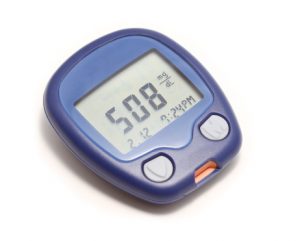
To add to the list of diabetes complications there is diabetic hyperosmolar syndrome, a condition categorized by extremely high blood sugar.
Causes of diabetic hyperosmolar syndrome
Common causes of diabetic hyperosmolar syndrome include:
- Illness or infection
- Not adhering to diabetes treatment or receiving inadequate treatment
- Certain medications such as diuretics (water pills)
- Undiagnosed diabetes.
Symptoms of diabetic hyperosmolar syndrome
- Blood sugar of 600mg/dL or 33.3mmol/L or higher
- Excessive thirst
- Dry mouth
- Increase frequency of urination
- Warm, dry skin
- Fever
- Drowsiness
- Confusion
- Hallucinations
- Vision loss
- Convulsions.
Treatment and prevention of diabetic hyperosmolar syndrome
Emergency treatment for diabetic hypersmolar syndrome includes:
- Intravenous fluid to combat dehydration
- Intravenous insulin to lower blood sugar
- Intravenous potassium, and possibly sodium phosphate to help cells.
To avoid diabetic hyperosmolar syndrome prevention is your best mode of defense. There are a few different tactics and tips that you can follow to prevent diabetic hyperosmolar syndrome.
7 tips to prevent diabetic hyperosmolar syndrome.
- Recognize symptoms associated with high blood pressure
- Always monitor your blood sugar
- When ill, ensure you stay hydrated to prevent dehydration
- Always follow your diabetes plan properly
- Eat well and exercise
- Keep vaccinations up to date
- Get checked for diabetes if undiagnosed.
With preventative measures you can help lower your risk of developing diabetic hyperosmolar syndrome.
Related Reading:
Older Americans have poor control over diabetes
Current research reports that only one in every three American seniors have their diabetes under control, according to John Hopkins University Bloomberg School of Public Health. Continue reading…
Diversify your diet to help against type-2 diabetes
Between work obligations, social plans and family demands, it is easy to fall into what is called the “food rut.” This is when we tend to eat the same foods all the time. In many cases, it’s not the best foods because we are on the move. While this routine might be convenient, it isn’t always healthy. Continue reading…
Diabetic retinopathy eye disease causes, prevention and treatment
Diabetic retinopathy is an eye disease experienced by those with diabetes. Unmanaged diabetes can cause complications to the blood vessels of the light sensitive tissue in the back of the eye – the retina. Continue….
Sources:
http://www.mayoclinic.org/diseases-conditions/type-2-diabetes/basics/complications/con-20031902
http://www.mayoclinic.org/diseases-conditions/diabetic-hyperosmolar-syndrome/basics/prevention/con-20026142